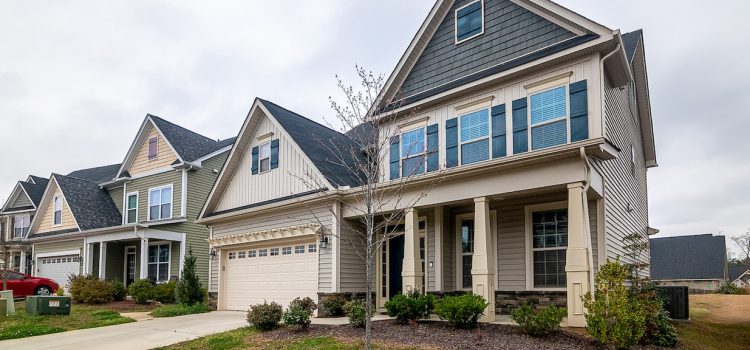
Introduction: An Uphill Battle – 8% Mortgage Rates and Housing Affordability
The pursuit of homeownership, a cherished American aspiration, faces a formidable challenge as mortgage rates surge to a staggering 8%. In this comprehensive article, we will delve deep into the profound implications of 8% mortgage rates and their substantial impact on housing affordability. We will also discuss strategies for prospective homebuyers to confront this uphill battle and the broader implications these rising rates have on the real estate market.
8% Mortgage Rates: The Challenge Unveiled
Understanding the Uphill Battle:
- The 8% Threshold: Mortgage rates hitting 8% represent an unprecedented challenge for housing affordability. Monthly mortgage payments surge, pushing the boundaries of what is considered an affordable home.
- Eroded Buying Power: Prospective homebuyers are grappling with a significant erosion of their purchasing power. They face difficult choices, from compromising on property features to postponing their dreams of homeownership.
Impact on Homebuyers:
- First-Time Buyers’ Predicament: First-time homebuyers, who are often constrained by limited financial resources, face the steepest hurdles. The dream of homeownership, once within reach, now seems a formidable challenge for many.
- Challenges for Homeowners: Existing homeowners looking to refinance their mortgages encounter higher costs and diminished potential savings. This necessitates a reevaluation of their financial strategies and could deter some from refinancing.
Strategies for Prospective Homebuyers:
- Financial Prudence: Prospective buyers must adopt meticulous budget planning, accounting for 8% mortgage rates. This planning encompasses not only higher monthly mortgage payments but also increasing property taxes and insurance costs.
- Government Support: Federal and state programs that offer down payment assistance and reduced interest rates become a lifeline for homebuyers, bridging the affordability gap and making homeownership a realistic goal.
- Extended Mortgage Terms: Homebuyers may explore longer mortgage terms, such as 30 years instead of the conventional 15. This choice, while increasing the total interest paid, can help manage monthly expenses and maintain affordability.

Photo by Kindel Media: https://www.pexels.com/photo/couple-standing-in-front-of-their-house-7579042/
Implications for the Real Estate Market
The crisis of 8% mortgage rates extends its ripple effect throughout the real estate market:
- Languid Home Sales: The higher mortgage rates often result in slower home sales, as buyers become more selective and cautious. This can mean properties spending more time on the market, impacting both sellers and real estate agents.
- Shift in Housing Demand: The crisis may prompt a shift in housing demand from high-priced urban areas to more affordable suburban or rural regions. This shift necessitates adjustments in urban planning and infrastructure development to accommodate the changing landscape.
- Real Estate Investors’ Adaptation: Real estate investors must factor in higher borrowing costs when evaluating investment opportunities. Some investors may need to adjust their expectations and strategies, potentially focusing on long-term investments rather than short-term gains.
- Policy Considerations: Policymakers and industry stakeholders are actively considering measures to mitigate the impact of higher rates on homeownership. Potential solutions include providing tax incentives for first-time buyers, capping interest rates, or fostering partnerships with financial institutions to offer accessible loans.
Comparative Table: 8% Mortgage Rates and Housing Affordability
| Topic | Description |
|---|---|
| Understanding the Uphill Battle | 8% mortgage rates pose a significant challenge for housing affordability, leading to higher monthly payments and reduced purchasing power. |
| Impact on Homebuyers | First-time buyers and homeowners seeking to refinance face substantial hurdles and financial constraints. |
| Strategies for Prospective Homebuyers | Prudent budgeting, government assistance programs, and extended mortgage terms offer potential solutions to the affordability struggle. |
| Implications for the Real Estate Market | Higher rates lead to slower home sales, a shift in housing demand, and the need for real estate investors to adapt to changing market conditions. |
| Policy Considerations | Policymakers are actively exploring measures to mitigate the impact of rising mortgage rates on homeownership, including tax incentives and interest rate caps. |
This comparative table offers a succinct summary of the primary points discussed in the article, enabling readers to grasp the essential information effectively.
Conclusion: Confronting the Uphill Battle
In conclusion, the surge in mortgage rates to 8% has uncovered an uphill battle for housing affordability, reshaping the homeownership landscape and challenging the dreams of many prospective buyers. However, with meticulous planning, government support, and strategic financial decisions, the path to homeownership remains viable.
The broader real estate market must adapt to these changing dynamics. Policymakers and industry stakeholders have a critical role in mitigating the impact and fostering a housing market that remains accessible and sustainable.










